
Provincial Roman, found in Caucasus region. 34d-4th c. CE. Glass with applied blue decoration.
MME 1910.7-12.1

Eastern Mediterranean, 4th c. CE.
GR 1868.5-1.240

Lower Galilee, 4th c. CE.
WAA 1892.3-17.66


Probably Syria, late 4th c. CE. Mould-blown glass with trailed decoration.
MME 1972.4-8.1; 1985.3-6.1

Palestine, ca. 575-675 CE. Glass decorated with the crux gemmata of Golgotha erected there by Emperor Theodosius II.
MME 1971.10-2.1
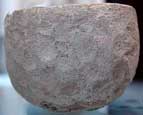
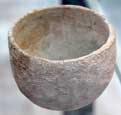
Sasanian, 5th-6th c. CE.
WAA 1911.4-4.13
Similar bowls have been found in China and are depicted in Buddhist paintings. See, for example, the late 9th-century banner depicting a bodhisattva, OA 1919.1-1.0139, found at the Mogao Caves in Dunhuang.
View additional text and image.
Other examples are in the Museum für Islamische Kunst, Berlin, Inv. No. I.2/62, and the Victoria and Albert Museum, Inv. no. C.58-1963.

N. Iraq, Koynnjak, 7th-9th c. CE.
OA 1968.5-22.5
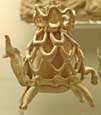
Syria, 8th-9th c. CE. Acquired in Aleppo. Blown glass with hot glass applique. "Cage flask" type, possibly inspired by 3rd-4th c. Roman vessels.
1913.5-23.115


Egypt (or Iran [?]), 9th-10th c. CE. "Cameo" glass. The hare motif is common in Fatimid art. H.: 15 cm.
ME OA 1966.12-11.1
Learn more. Compare a "cameo" glass beaker in LACMA 88.129.155, indicated as being from Iran.

Egypt or Syria, 9th-10th c. CE. "Sandwich" glass--gold and blue enamel with silver foil sandwiched between layers (the technique differs from Roman in that the Romans used gold leaf, not paint). H.: 15 cm.
ME OA 1978.10-12.2
Learn more. Compare LACMA M.88.129.184.

Syria or Iran (?), 9th-10th c. CE (?).

Iran, 9th-10th c. CE. Wheel cut rock crystal.
(?) ME OA 1954.10-13.1

Iran, 9th-10th c. CE. Handle decorated with wheel-cut facets imitating earlier Sasanian ware.
OA 1991.3-8.1
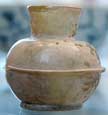

Syria, 9th-10th c. CE.
OA 1985.11-9.1; 1913.5-23.106
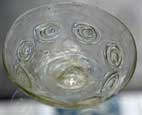
Egypt, Atfih, 10th-11th c. CE.
OA 1902.5-17.5


Iran, 9th-10th c. CE.
OA 1968.7-22.1; 1956.7-30.1
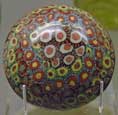
Iraq, 9th c. CE. Mosaic glass.
1973.6-23.1

Iran or Egypt, 9th-10th c. CE. Mould-blown glass.

Iran, 9th-10th c. CE. Mould-blown glass.
(?) ME OA 1976.11-2.1
Compare LACMA M.88.129.173, indicated as being from Iran, 10th-12th c. CE.

Iran or Egypt, 9th-10 c. CE. Mould-blown glass.


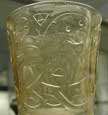
Syria or Egypt, 12th-13th c. CE. Relief-cut glass. H.: 14 cm.
ME OA 1959.4-14.1
Read more.

Syria, 12th-13th c. CE. Opaque turquoise glass, which is rare to use for making vessels.
OA 1945.10-17.260


Syria, 13th c. CE. Found at Aleppo; probably made there. Blown glass.
ME OA 1913.5-22.39

Venice ca. 1330. Inscription reads: "Master Aldrevandin made me." Enameled glass. H.: 13 cm.; Dia. 10.9 cm.
Although Western, not Middle Eastern in origin, possibly influenced by Syrian glass; at one time was considered to be "Syro-Frankish." MME 1876.11-4.3
Learn more. The image on the website shows a different side of the beaker than the one shown here.